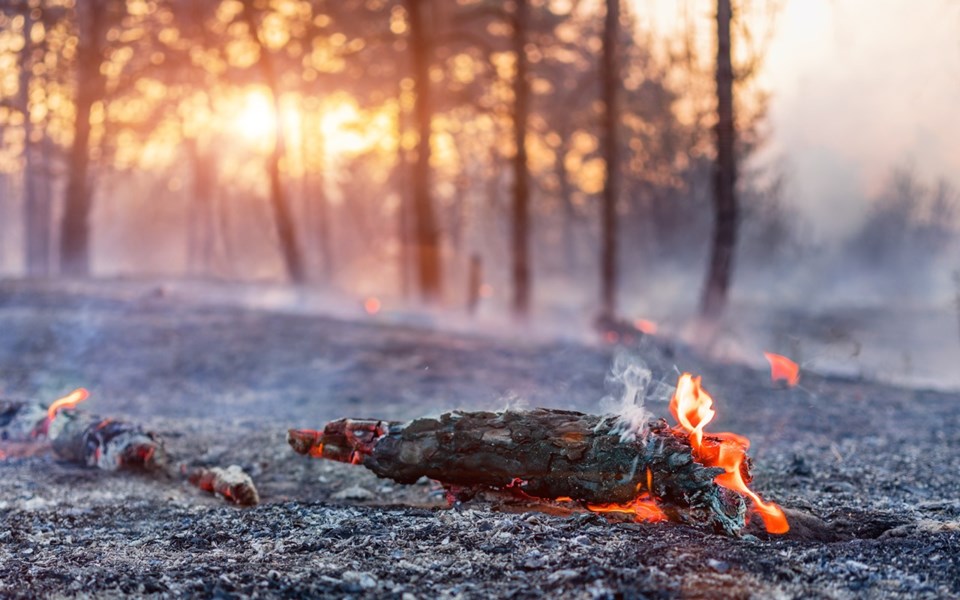LAKE TAHOE, Calif.—From Taos to Banff to Tahoe, the talk of the last week was all the smoke in the air.
"Smoke coming in. Damn," wrote one Telluride resident on Facebook Sunday afternoon. "We can't even see the mountains," reported a Jackson Hole resident Tuesday morning.
Lake Tahoe has been smothered with smoke from fires in three directions, reported the San Francisco Chronicle.
"We couldn't breathe," a woman told a park ranger while in a huff to check out of a campsite along the Lake Tahoe shoreline. "We were going to go on a bike ride, but last night sucked. We're going straight home."
With a fire raging on its southern flanks, the Yosemite Valley was closed on July 23 and it remained closed early this week. Air quality in Yosemite, said the Chronicle, rivalled that of Beijing. There, concentrations of fine particulates called PM 2.5—which measure 2.5 micrometers in diameter and smaller—are regularly six times higher than World Health Organization recommendations.
In Idaho, PM 2.5 was bad enough at Sun Valley and Ketchum that on at least one recent day everybody was advised to stay indoors and keep the windows shut. Children, people with lung disease, and the elderly were advised to stay indoors on several days.
California had giant fires last fall, continuing into December. During one smoke advisory, the Los Angeles Department of Public Health advised schools to suspend physical activities like gym, cancel after-school sports, and keep windows and doors closed. If air conditioning in homes drew air from outside, people were advised to go to libraries and other designated air shelters with better-than-average air filtration systems, reported Sierra Magazine. British Columbia also has designated clean air shelters.
In Colorado, pediatric pulmonologist Dr. Carl White told the Summit Daily News that children are particularly susceptible to the negative effects of the smoke.
Children breathe more air for their body weight than do adults, magnifying the effect the air quality has on their bodies, he explained. "The second issue is that children are still developing their lungs, and more interferences with the normal lung chemistry means impact to growth and development of the lung."
PM 2.5 poses a danger to older people, too. Inhaling that PM 2.5 can turn the body's clotting system on and increase the risk of heart attacks or strokes, he said. PM 2.5 can be safely filtered with N95 or N100-type particulate masks. Such masks can be purchased at Walmart, Lowes, and other big-box retailers.
White told the Summit Daily the smoke has other dangers. "Carbon monoxide, acrolein, formaldehyde, benzene, benzopyrene, dibenzanthracene, nitrogen oxide and so on," White reported. Many of these same chemicals are present in cigarette smoke. As such, breathing in mountain air during smoky periods is almost as bad as breathing second-hand smoke.
White said that experiments about effects of smoke have been conducted on animals, but not human populations. "What we're seeing now is a huge human experiment in progress."
Fires have been growing larger and increasing in frequency during the last 30 years in the West. British Columbia was in a state of emergency for 70 days due to wildfire, the longest in the history of the province.
Harper's Magazine pointed out that fires rarely exceeded 10,000 acres in size through much of the 20th century. Then, in 1988, a fire called Canyon Creek burned for months, covering 250,000 acres. It was an anomaly then. Not so much now. Blazes of more than 100,000 acres are called megafires. By Monday evening, the Yosemite fire was getting close.
Cairn creators urged to curb it
BANFF, Alta.—Parks Canada has been frowning about all the rock cairns being constructed along hiking trails in Banff National Park.
"We don't encourage any building of stone cairns," said Greg Danchuk, the agency's visitor experience manager. "The time-honoured approach of leave-no-trace would include not piling rocks and stones around the place."
Another reason not to do so, he told the Rocky Mountain Outlook, is because moving rocks shifts soil and makes the area more prone to erosion.
Stacking stones also annoys some people in Yoho National Park. "Please refrain from saying 'I was here' with rock graffiti, and refrain from moving rocks placed by the trial crew to define routes," a Facebook post by the Lake O'Hara Trails Club scolded.




